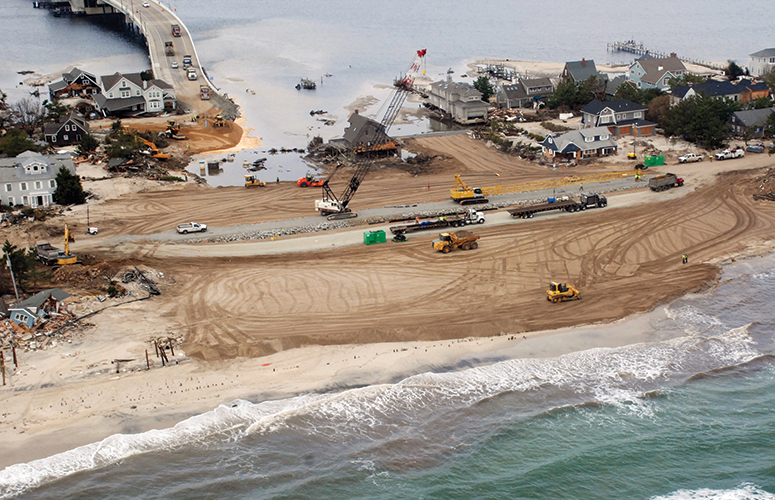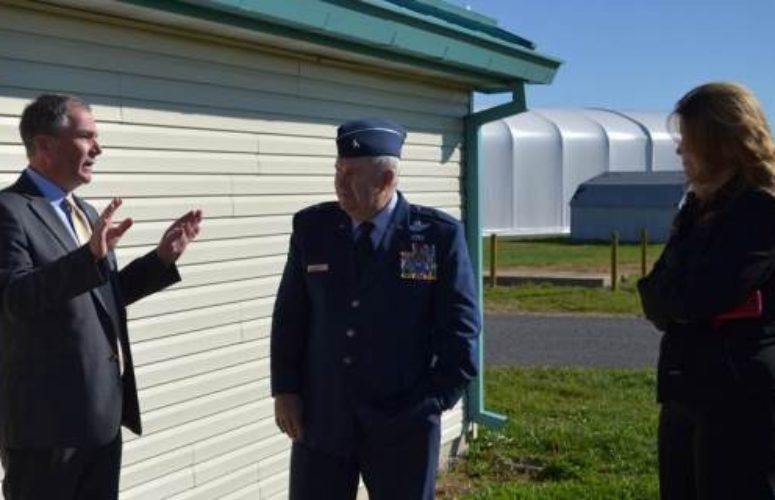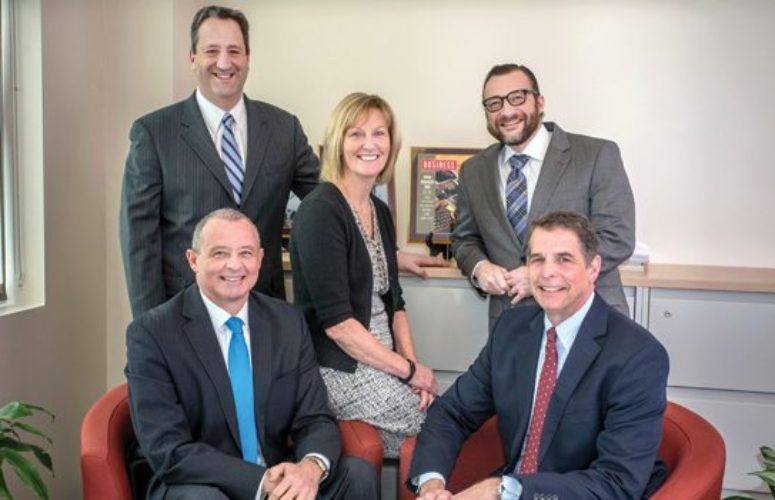
Power Utilities Take a ‘Resilient’ Stance
New Jersey electric and natural gas companies are investing billions in infrastructure to keep businesses and residents ‘empowered.’
By Anthony Birritteri, Editor-in-Chief On Apr 20, 2015Resiliency, redundancy and infrastructure improvements; these are the key initiatives of the state’s power utilities today as they improve their transmission systems in the aftermath of Superstorm Sandy.
In the following Q&A, New Jersey Business magazine sits down with the executives of four leading utilities, as well as the president of the New Jersey Utilities Association, to discuss the money being spent on improving energy transmission (both electric and gas) throughout the state. Billions of dollars are being invested, but what does this mean for end-user costs? Are residents and businesses more accepting of utility capital investments after being “left in the dark” in Sandy’s immediate aftermath?
Overall, the experts in our quarterly Trade-talk Roundtable say users will see price benefits when their projects are completed. One natural gas utility says users are already seeing lower gas prices thanks to its capital investments … and planned access to more Marcellus Shale natural gas will hopefully deliver even lower prices.
Other issues discussed on the following pages include: renewable energy usage, the state energy master plan, the most recent BGS auction, the PJM power grid and overall economic development.
New Jersey Business magazine would like to thank both the New Jersey Utilities Association for its help in organizing this event, and the New Jersey Business & Industry Association for hosting everyone at its Trenton headquarters.
Meet the Panel:
Jeffrey E. DuBois is president of Folsom-based South Jersey Gas, a subsidiary of South Jersey Industries (SJI), which provides natural gas service to more than 365,000 customers in seven southern New Jersey counties. DuBois, who is also senior vice president of SJI, joined South Jersey Gas in 1987 as a retail marketing representative. He advanced through several management positions and earned his current positions with SJI in 2004, and SJG in 2012. In November of 2012, he was appointed to SJG’s board of governors. Dubois is also chairman of the Northeast Gas Association and vice chairman of the New Jersey Utilities Association. Additionally, he serves on the American Gas Association’s Leadership Council.
Kathleen T. Ellis is executive vice president and chief operating officer of New Jersey Natural Gas (NJNG), Wall Township. The company, which is the principle subsidiary of New Jersey Resources, operates and maintains more than 7,000 miles of natural gas transportation and distribution infrastructure, serving more than half a million customers in Monmouth, Ocean and parts of Morris and Middlesex counties. Ellis joined NJR in 2004 and is responsible for the delivery of energy and customer service. Additionally, she oversees the development and implementation of marketing strategies and new business development, long and short-term communications, regulatory, government relations and environmental policies and strategies, and the development and implementation of all customer and community relations programs.
Andrew D. Hendry is president of the 16-member New Jersey Utilities Association (NJUA), Trenton, the statewide trade association for investor-owned utilities that provide essential water, wastewater, electric, natural gas and telecommunications services to New Jersey residents and businesses. Prior to joining NJUA in 2012, Hendry served as the executive director of the New Jersey Senate Majority Office, where he oversaw a staff of attorneys, researchers and communications experts. He worked closely with legislative leaders, Governor Chris Christie and his senior staff to craft major pieces of legislation, including pension and health benefits reform, and restructuring New Jersey’s higher education system.
Ralph A. LaRossa is president and chief operating officer of Newark-based Public Service Electric and Gas Company (PSE&G). PSE&G is New Jersey’s oldest and largest regulated gas and electric delivery utility, serving approximately 2.4 million customers. It is a subsidiary of Public Service Enterprise Group (PSEG), the publicly traded diversified energy company with revenues of approximately $11 billion. LaRossa was named PSE&G president in 2006. Prior to this, he was vice president of electric delivery for the company. He is also chairman of PSEG Long Island and was recently named chairman of Choose New Jersey, the marketing arm of the New Jersey Partnership for Action.
Vincent Maione is president, Atlantic City Electric (ACE) Region, of Pepco Holdings, Inc. ACE has a service territory of 2,700 square miles, serving 545,000 customers in the state’s eight southernmost counties. Maione’s responsibilities include developing and maintaining key customer, community and governmental relationships, as well as ensuring ACE’s services and performance meet the expectations of customers, regulators and government officials. He began his career with ACE in 1984, working in the company’s commercial and industrial marketing department. He has held various supervisory and management positions within the company throughout his career, including distribution/transmission engineering, field operations and project management.
![According to PSE&G’s Ralph LaRossa, “There is the desire to repair, replace and upgrade infrastructure across the entire northeast, but with anything, you have to balance that with cost. If you put customers in a bad spot … then you won’t need the infrastructure because [people] won’t be around.”](https://njbmagazine.com/wp-content/uploads/2015/03/MAG-RT-LaRossa-300x163.jpg)
According to PSE&G’s Ralph LaRossa, “There is the desire to repair, replace and upgrade infrastructure across the entire northeast, but with anything, you have to balance that with cost. If you put customers in a bad spot … then you won’t need the infrastructure because [people] won’t be around.”
LaRossa: On the electric side, I see people using less of the product, but relying on it more. The reliability of it has become a big issue. Regarding Sandy and looking at it from a redundancy and resiliency standpoint, both of those pieces have to be tied together. Utilities have to look at what is going on behind the meter so that we can meet the needs of customers as they are actually using our products.
Ellis: Our franchise territory is mostly Monmouth and Ocean counties, so we were literally in the bulls-eye of the storm. The devastation was not only unprecedented, but it was unforeseen that an underground utility can sustain that kind of damage. Pipes were literally ripped out of the ground.
New Jersey Natural Gas (NJNG) looked at our systems and we saw our vulnerability … that 85 or 90 percent of our supply comes from one station in Jamesburg, Middlesex County, and our system is built north to south. So, if there is an interruption of a serious magnitude for a long duration, we could literally lose our system from top to bottom. We are addressing that right now. We have a proposal, hopefully to be in front of New Jersey Board of Public Utilities (BPU) in the next month or so, to bring a secondary feed, our Southern Reliability Link, into our system in the southern end. That will not only provide redundant gas services in the south to complement the one coming from the north, but it will also be a second supplier.
DuBois: The damage in Kathy’s territory opened our eyes to the extent of the damage that could occur, especially along New Jersey’s barrier islands.
We have proposed storm-hardening mechanisms now in place, so that we can go into the barrier islands and get rid of low pressure pipes and replace them with new, high pressure ones. That will solve the flooding issues. It doesn’t take care of the problem of pipes being potentially ripped out of the ground … I’m not sure how you ever solve for that, other than having plenty of redundancy and multiple feeds.
Maione: Any type of big storm identifies your vulnerabilities and identifies things you might have done successfully. The vulnerabilities were around the barrier islands. Now we have identified where stations are prone to flooding, and where the lines are that are prone to wind damage.
Atlantic City Electric (ACE) has made concerted efforts to invest in our infrastructure. We spent more than $700 million over the last five years looking at and focusing on equipment that we need to replace, harden and make more resilient.
Also, communications is extremely important. Following any large storm, people want to know when the power is going to be restored.
Hendry: One positive to be taken from Sandy is that it was a game changer for the public, too, in that there is more recognition about the need for infrastructure investment and about the fact that there are costs associated with not investing in infrastructure.

NJNG’s Kathleen Ellis says the company’s New Jersey Reinvestment in Systems Enhancement (NJRISE) program is a five-year, $102.5-million initiative. “We are starting it right now. Besides the Southern Reliability Link, we are moving one regulator station that was in Mantoloking onto the mainland” … and “hardening the second regulator station at Ship Bottom on Long Beach Island.”
Q: Is it now easier to get public approval to spend money and make systems more resilient?
LaRossa: It is still a balancing act. Just look at what is going on with our [transportation infrastructure] funding. There is the desire to repair, replace and upgrade infrastructure across the entire northeast, but with anything, you have to balance that with cost. If you put customers in a bad spot, residential or business, then you won’t need the infrastructure because [people] won’t be around.
Ellis: It’s a legitimate point. We could probably invest three to five times more than we probably do, but there is a delicate balance.
DuBois: To the Board of Public Utilities’ (BPU) credit, it saw how natural gas prices were coming down and realized we needed to take advantage of that and complete improvements. We are making these types of improvements and our rates are as low as they were 10 years ago.
Hendry: Policy makers are important in this, too, in terms of the relationship with the public. It is important for legislative leaders, the executive branch and regulators to continue to get that message across to the public … the need for investment. Just as the argument is going on with the our roadways, society rises and falls based on the quality of its infrastructure.
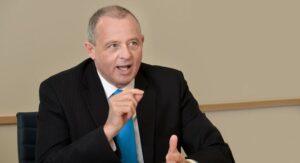
“New Jersey is never going to be the cheapest utility provider in the union. … A lot of things impact the price of the commodity. They include where we are located, how we bring in the fuel, where the fuel was, policy … a lot of factors,” says Vincent Maione of Atlantic City Electric.
Q: Regarding your energy resiliency plans, at what stage are your utilities?
LaRossa: With our Energy Strong program, we started the gas work, replacing a lot of the mains in low lying areas that had water infiltration. We’ll have that done in next 18 months. We will be back having additional conversations with the BPU about additional gas main replacement, which is tied to more long-term strategies.
From an electric standpoint, we are just starting the process now with raising substations and reinforcing some of the infrastructure. We have done a lot on the transmission side regarding the resiliency, so most of those stations are completed. Overall, the Energy Strong effort is spending $1.2 billion over five years, but the bulk of it will be done in three years. (Editor’s Note: A March 2 Public Service Enterprise Group press release on earnings growth reported the company is spending $13 billion on a five-year capital spending program, which includes PSE&G’s $1.2-billion Energy Strong program.)
Ellis: Our program, New Jersey Reinvestment in Systems Enhancement (NJRISE), is a five-year, $102.5-million initiative. We are starting it right now. Besides bringing in the second feed line mentioned earlier, we are moving one regulator station that was in Mantoloking onto the mainland, out of harms way. We are hardening the second regulator station at Ship Bottom on Long Beach Island, and we are installing about 35,000 excess flow valves in the flooded area both on the barrier islands and on the mainland.
DuBois: Our $103.5-million Storm Hardening and Reliability Program (SHARP) is a three year initiative. We are spending $34.5 million per year aimed at getting rid of our low pressure systems along the barrier islands. We started last year in Atlantic City and expect to have it done by late summer. Then we will start moving south, down the coast.
Maione: We were proactive about five or six years ago across our entire organization – all three electric utilities that serve under Pepco Holdings, Inc. – in making investments. We invested over $700 million over the last five years. Moving forward, we are still making investments.
The BPU asked us to present a plan in which we are spending about $800 million over the next 10 years. In the next couple of years, we plan on spending $200 million in firming up our transmission systems and spending $200 million in replacing and upgrading substations.

According to Andrew Hendry of the New Jersey Utilities Association, “One positive to be taken from Superstorm Sandy is that it was a game changer for the public … in that there is more recognition about the need for infrastructure investment and about the fact that there are costs associated with not investing in infrastructure.”
Q: How will the merger between PEPCO and Exelon help ACE with its infrastructure plans?
Maione: We think it will add to what we have already done because of Exelon’s strength and ability to bring its utilities up to the first quartile with frequency and duration. We were in the second or third quartile … we are aspiring to be in the first, based on our size. With Exelon’s financing and its viability, we see it as being an improvement in terms of making more infrastructure investments.
Q: To what extent can you ensure that these new systems will be able to handle another Sandy-like storm?
LaRossa: We talk about Sandy a lot, but I keep reminding everyone that about 12 years ago, the lights went out in the entire northeast, and policy makers, at that point, said they wanted to do something about the transmission system … that was at the federal level. We are still making those investments. We are layering on a lot of things that we have been responding to … crises that have taken place. So there are lots of things utilities are doing across the board, not just Sandy related.
Concerning Sandy, I think we are doing just about everything we can, based upon what policy makers have set as the guidelines. The guidelines right now are FEMA plus 2 (base flood elevation plus two feet), as far as building standards. If a storm comes through that is FEMA plus 3, we may have some assets that are damaged. But, we follow what the policy makers determine. Now there are other states that are saying they are doing FEMA plus 1 and other saying FEMA plus 3. It’s a combination of agencies in the state that got together and decided what made sense. And we build to those standards.
For PSE&G, we’ve got “N-minus 2” built into a lot of our systems, so you can lose two assets and still keep the lights on in the system. But when you get down to the individual home or business, there is still one line going into the structure. If that line is severed, service is going to be interrupted. That brings us to, “What do you want to do behind the meter?” Do you want redundant generation at the home? Do you want it in the business, do you want micro grids, combined heat and power (CHP), etc.?
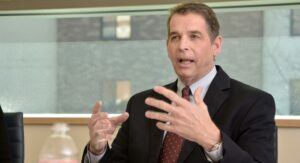
“There are a lot more benefits to be had if we could get more transmission lines to get the gas out of the Marcellus Shale and to market areas,” says SJG’s Jeffrey DuBois. “We have to be able to build some intrastate and interstate pipelines.”
Q: What is the condition of the PJM power grid compared to others in the country, and does this network have to be upgraded as well?
LaRossa: That gets back to the 2003 blackout. It was clear back then that policy makers felt that the PJM needed to be upgraded and that is what we are doing on an ongoing basis.
The problem you really have on the transmission side is that it takes a long time to make an impact. The biggest example in the state is the Susquehanna Roseland transmission line. I think it is going to take eight years from the time it was identified to the time it will be carrying electricity. I just don’t know if that is right. That is a PJM project that we implemented, that crosses two states and a national park (it was held up in the national park system’s permitting process for years). So, it is telling just how long these projects take to get in service.
Maione: PJM has been around for some 20 to 30 years. It used to be just Pennsylvania, New Jersey, Maryland and Delaware, and then it expanded to include 13 states and Washington, DC. For what it has done, it has basically allowed everyone to collaborate and build the best grid in the northeast, which is a huge system in itself, probably one of the oldest and most intricate in the nation.
Getting all of these interested parties at the table and finding out what needs to be done, does take a while. To build any new infrastructure takes a while. It takes focus, drive, conviction and everyone pulling together as a team.
LaRossa: It is tough for people to understand the impact of the PJM on their electric bills, but it’s there. Most New Jersey businesses pay what is called the hourly CIEP rate (what happens in the system on a day-to-day basis). There is a congestion point that exists outside of Maryland right now that drives price spikes for customers. Trying to explain to someone that a restriction in the flow of electricity outside of Maryland has anything to do with the price that they are paying in New Jersey is difficult.
That problem popped up because of the retirement of generation capabilities in that area. Flows changed, so there was a restriction in getting the electricity from point A to point B.
Q: What are you doing to drive down energy costs for businesses, especially since the state has among the highest energy rates in the nation?
LaRossa: No. 1, we are working on the transmission system, where benefits will show up around 2018. It’s a long time away, but we are building in resiliency. That will have a positive impact on costs. The other thing we have been doing is educating users on energy efficiency. We are also trying to figure out where we can help with behind-the-meter solutions that people are trying to implement, such as CHP, to potentially lower costs.
Ellis: We have an energy efficiency program called the SAVEGREEN project. We also spend about between $40 to $50 million a year on rebates and on bill repayment plans that support and supplement the NJ Clean Energy Program, both on the residential and business side. As everyone knows, the easiest and most effective way to bring the bill down is to leverage energy efficiency. Our aim is to also help you make the right financial choice when you, for example, make the big investments, like replacing your HVAC systems. We try to help you install the most energy efficient equipment that you can.
Maione: New Jersey is never going to be the cheapest utility provider in the union.There are a lot of factors for that. We can be here for hours talking about it. A lot of things impact the price of the commodity. They include where we are located, how we bring in the fuel, where the fuel was, policy … a lot of factors.
We try to keep our costs as low as possible and try to be as competitive as possible with labor costs, expenses, employee benefits, trying to get economies of scale … we are probably as competitive as any business out there. In being involved with a company like Exelon, we have more buying power and the ability to do more. So, that adds some benefit.
LaRossa: You can’t drill home the point enough – it’s the location. We are never going to be the cheapest on electric, but we are getting closer on gas. We won’t ever be the cheapest in electric until we start utilizing gas coming from the Marcellus Shale. West Virginia has the cheapest electric prices, I think, because they are sitting on top of coal that they burn and sell five feet away. We, I think, have the cheapest gasoline prices because we are getting it from refineries [here] and selling it five feet away.
Hendry: Obviously, I think everyone agrees that bringing energy prices down would be a good thing for business. On the electric side, we are 10th highest in the country. We are lower than New York, Connecticut and Massachusetts. So, yes, it is a factor being in the northeast, but in looking at our neighboring competitive states, our prices are actually lower. Regarding natural gas, the last I checked, we were 35th most expensive. That is a pretty good position relative to other states, and important for businesses and their location decisions.
And if you looked at the basic generation service (BGS) auctions that were held recently, prices dropped and, again, that has to do with the price of natural gas. So, the more we are able to get the Marcellus Shale natural gas here more effectively and efficiently, customers are going to directly benefit.
Q: Regarding the recent BGS auction, prices went down for some utilities, while prices increased for others. What causes a price to go up for one utility and down for another?
LaRossa: Our rates increased by 2.1 percent. The reason why we were higher was because of the transmission investments I talked about earlier, which we all will see the benefit of in 2018. We have spent more on transmission than any other company.
Also, the increase will have a bigger impact for residential customers than business customers. Residential will have the 2.1 percent increase. It will be less than that for business customers because their fixed [price] component is over a larger volume of usage.
Q: We know what the benefit of the Marcellus Shale is: cheaper natural gas prices. Will this benefit continue, or are there some upcoming roadblocks that you see in terms of access and drilling?
DuBois: There are a lot more benefits to be had if we could get more transmission lines to get the gas out of the shale and to market areas. On cold days, when gas may be trading at $9 per therm here in New Jersey, in the heart of the Marcellus it is $2. That is because there is no way to move it. So, there are still benefits, but we have to be able to build some intrastate and interstate pipelines. There are some proposed projects we are involved with to get more of it into New Jersey.
Ellis: The PennEast pipeline project includes UGI Utilities (Pennsylvania), South Jersey Gas, NJNG, Elizabethtown Gas and PSE&G and Spectra Energy. The protesting that you see [against the project], honestly, is part of the process. That is an interstate pipeline project, so it is Federal Energy Regulatory Commission regulated and it is part of the FERC process.
Q: Do you feel updates are need to the state’s 2011 energy master plan?
DuBois: The energy master plan was drafted before Superstorm Sandy, so it didn’t really address hardening. I think that it is an area to be addressed. [The plan] really doesn’t have teeth. It’s a great guideline, and I know the BPU uses it when it tries to set policy.
Ellis: I would say that it is very pro gas in terms of electric generation, transportation and direct use.
Hendry: There is a statutory requirement to update the plan every three years and completely overhaul it every 10 years. I think part of the [delay] is the complexity of the issues we have discussed. However, I do think that having the plan out there is a benefit because it does generate dialogue surrounding the kinds of issues being brought up.
I think another issue is that the state will have to struggle with the impact of distributed generation and solar throughout the system. A lot of those users are not paying towards the grid when they are using their [system], but they depend on the grid, maybe more so, to sell their excess energy back into it. That means those costs are going to get shifted more and more to residents and businesses that don’t have solar, for example.
That is an example of a policy issue that the energy master plan can crystallize.
Q: What is the role of your respective utilities in terms of economic development?
Hendry: All the utility companies, including the water companies that our association represents in the state, own almost $40 billion worth of infrastructure at this point. We counted close to $4 billion in capital investment per year over last couple of years. That level of investment is a significant economic driver and a critical thing to keep going in the state.
Rutgers did a study on the ripple effect of utility infrastructure investment, and the estimates were between 10 to 20 jobs created per million dollars spent … and we are talking billions of dollars in activity.
Maione: We all know our obligation to economic development, as well as being engines for economic growth … we are not going anywhere. We are the companies that are going to be here no matter what the cost of anything is; whether the cost of living goes up or down. Our employees work here and we have an obligation to serve the people of New Jersey.
I think every public utility had an economic development group. Speaking for ACE, we eliminated ours. Why? Because we didn’t see any value in it. Things were fragmented. We would do our own [economic development initiative] and every other utility would do their own. We were going after the same targeted market. So, we were actually being redundant.
Now, we finally have one concerted effort with Choose New Jersey, which markets the entire state, documenting all of its benefits; all the reasons why we are here and staying here. We need to let everyone outside our borders know why we are here and why we see value in moving and growing your business here. I think Choose has been a tremendous success over the last four to five years. … And you have four founding companies of Choose New Jersey in this room, and Ralph is our new chairman.
Q: What do you see as the energy mix for the future? Will it consist of new base load plants, solar, distributed generation, nuclear and wind?
Maione: I think it is all of the above. It has to be. I think everyone knows you need some base load generation because renewables are not dispatchable – meaning you can’t call on them when you need them. So there has to be a balance … and let the policy decision wonks figure out what type of fuel … natural gas, nuclear, clean coal, they are all viable alternatives to the mix. Then include renewables, just enough so that we are not pricing ourselves out of the market.
We talk about savings and how we are going to lower prices. Well, if you buy the most expensive energy [renewables], that doesn’t make a lot of sense. So, you have to balance cost and impact on the environment. A mix is probably the best way to go, but I don’t know what that mix is going to be.
DuBois: You need a little bit of everything. You can‘t say no to solar, wind or natural gas. Solar is huge in our state. Wind is having a tough time getting started. Natural gas prices continue to go down, and that is going to drive a lot of the decision making when generation is built.
LaRossa: The big question is the economy. If the economy is robust, policy makers will lean more towards clean because the economy “can afford it.” But absent that, I think there will be more of a pull back to natural gas.
Related Articles:



